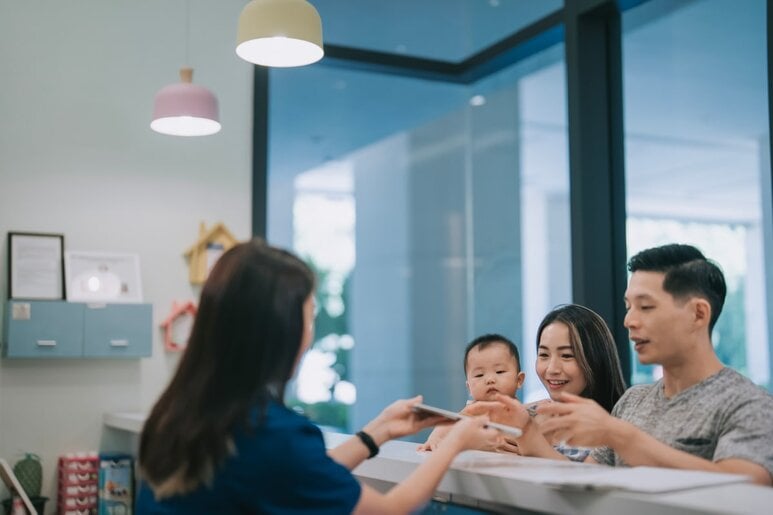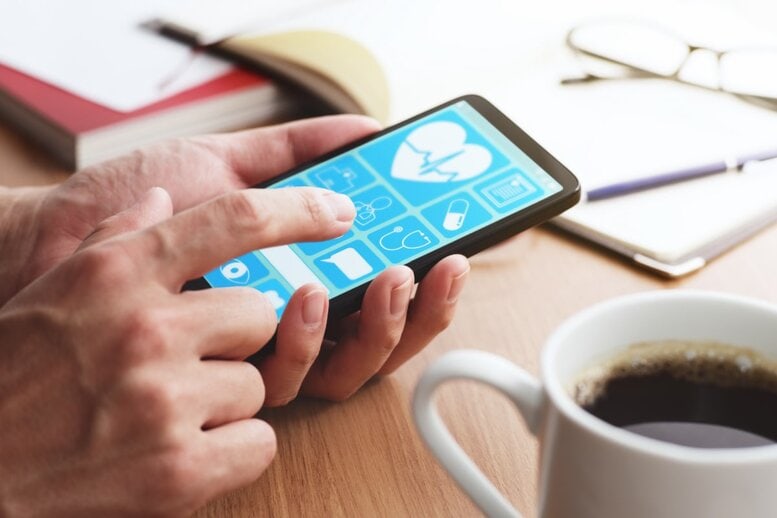
by DAN RICE
PRODUCT MARKETING MANAGER, RHAPSODY
For every significant advancement of technology in healthcare it is encouraging to think about how it might relate to better care outcomes in the future with the help of better data collection and the workflow(s) it can improve. Inside and outside the healthcare delivery system, we already see that new tech will help foster and develop a more enlightened future, with a plethora of new data points available about our health.
While the future may be focused on applying data science and next-generation AI for better patient care and ultimately healthier lives, there is so much we can do right now. In the present, all this new information has substantial implications if organizations can maximize and leverage existing investments to focus on the “total experience.”
Making a difference by bringing patients and healthcare workers closer together

The “total experience” extends far beyond user experience that we talk about in application development. It speaks to the interconnections between patients and healthcare workers and available information, and how the closer these contributors become, the greater the shared experiences (and outcomes) can be!
This mindset involves building a strategy to not only develop architectures that will connect people to new data sources and technology but reach the incredibly important legacy systems to complete the picture for the patient (consumer) or clinician (employee).
Gartner lists Total Experience Transformation as one of five leading healthcare leader business drivers, as “the goal of TX is to drive greater customer and employee confidence, satisfaction, loyalty, and advocacy.”1
In this blog we’ll explore the relationship between this goal and your API gateway strategy, but first let’s talk about the ideals of a total experience.

Take staffing shortages for an example and apply it to the healthcare employee experience. Healthcare workers with an ideal employee experience can think and act quicker because of the wealth of on-demand information available. They can also accomplish much more while being happier in their roles.
Some processes that took days or weeks may now take minutes or hours and even help minimize the pain associated with staffing shortages. At this point talent recruitment becomes easier, because when specialists can focus on their area of expertise in a high performing way instead of manual tasks, they share their job satisfaction with others.

The same principle applies to the patient experience as well. If the customer or patient experience is optimal, registration and pre-authorization processes run smoothly, preventive care is easily understood through the patient portal, and notes from a visit are readily available in a timely manner to better understand a prognosis or a doctor’s recommendation.
When the process part of the patient journey is consistently smooth, information is readily available, and one develops a sense of trust that they have put their care in the hands of the right professionals.
There is no doubt that optimizing information updates and subsequent processes can have a big impact on consumer confidence, but the inverse can occur if a patient has a bad experience when engagement tools have missing, incomplete, or worse — incorrect information.
So, how can an organization apply technology to improve patient and staff experience, speed up the processes involved, and spend less in accomplishing more?
It doesn’t sound realistic; when is anything in a fast-moving world ideal or optimal? But the good news is, many tools are available if we can identify and map processes for improvement and then apply appropriate integration and data enrichment techniques.
For collecting information to fuel your total experience initiatives, consider starting with a sound approach to APIs, clinical storage, and data transformation.
Improving workflows through APIs and supporting tools

One such use case category with a high ceiling for value is mobile apps interfacing with patients and clinicians. These applications can enable the patient to do more before they arrive and after they leave to facilitate better health. Other apps enable hospital staff to be more informed and efficient while in motion during the day.
But how valuable are these (presumably) great tools when the timing of information is off or incorrect altogether because conditions have changed?
If a patient logs in and only finds missing information or a clinical dashboard doesn’t get updated with enough frequency, how much value is there from the patient or clinician’s point of view?
When it comes to collecting information, it is important to consider the following:
- For external apps used by patients or clinicians, how and how often are you accessing the internal information behind the firewall to drive these apps?
When performance concerns equal infrequent updates to application database tables, it can result in your application users wanting more from out of touch and out of date dashboards, knowing something should be there but isn’t, or having to potentially wait for hours or even worse days for results (when something otherwise could be immediately addressed).
Accessing current information via APIs through an API gateway can be much more efficient and safe. It is also much more scalable than separate tables elsewhere populated from infrequent file transfers or APIs handled one-by-one through separate firewall access rules.
- When driving clinical workflows, are you managing via a centralized clinical data store such as a FHIR server?
When you are re-inventing your workflows and starting to visualize the time that can be saved and the benefits that can be realized, you’ll note that workflows often require the collection of multiple pieces of information before a decision can be made. So before successive steps occur, it can be useful to persist data for a time on a FHIR server to store and query and support work in progress.
- How do your integration capabilities to support workflows easily support different transformation needs?
For the many systems you need data from, conversions from one format to another will be needed (such as supporting the various healthcare message formats and standards including HL7 (v2 and v3), HL7 FHIR, CCDA, NCPDP, X12, IHE, DICOM).
Does your strategy or platform include an integration engine that can handle anything healthcare can throw at you and easily work in tandem with your API gateway? (If not, we would love to talk to you about this today).
- What is your approach to security with authentication and authorization for the many external systems that are beginning to present themselves that need access to previously internal APIs?
Taking advantage of access management by adding an authentication layer for outside users of API calls is of utmost importance. Leverage OpenID Connect, SAML, and OAuth2 with your external apps and SMART on FHIR applications to greatly simplify authorization while taking advantage of granular permissions.
Aligning total experience with integration experience
In conclusion, supporting the “total experience” means better and more immediate exchange of secure information.
Rhapsody can help bring your patient and clinician groups closer to facilitate better interoperability, truly lower the consumption gap of investments that have been made, and empower the people you employ and the people you serve.
But the solution isn’t one-dimensional, and it leverages years of healthcare expertise and a number of capabilities to address the challenges at hand.

The Rhapsody API Gateway is designed from the ground up with healthcare in mind, tuned for performance with robust integration to a FHIR server, authentication server, and capabilities via Corepoint or Rhapsody integration engines to enable any workflow transformation.
With other capabilities such as terminology management or identity management part of the greater Rhapsody Interoperability Suite, you can easily expand when those areas need to be addressed.
With the Rhapsody API Gateway as your centralized application for monitoring API traffic, alongside the right tools from the Rhapsody Interoperability Suite and our Professional Services team, we can fully support your total experience transformation goals.
Ready to talk to an API expert? Contact us now.
For further reading, check out these API resources:
- 5 Points to consider when evaluating your API gateway strategy
- An introduction to APIs and how they can help solve health IT’s biggest interoperability challenges
- A global view of how API technology enhances privacy and security.
- Healthcare and Life Science Business Driver: Total Experience Transformation, January 2023, Kate McCarthy https://www.gartner.com/document/4023193?ref=solrAll&refval=369161315
